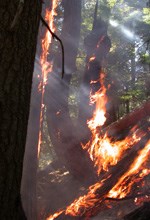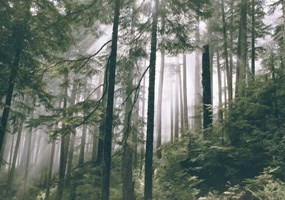
As you climb from river valleys toward the peaks you enter the montane zone, where new characters enter the forest stage. Montane forest begins at about 1,500–2,000 feet and transitions into subalpine forests at about 4,000 feet. On the wetter west side of the park, silver fir becomes a major player along side western hemlock. On the drier east side silver fir enters, but only on cooler, north-facing slopes. On sunny, south-facing slopes, Douglas-fir and western hemlock dominate and fire plays an active role in creating a mosaic of different-aged forest. These forests cover thousands of acres of Olympic National Park’s mountain slopes where growing conditions are more challenging than the lowlands. Montane trees grow at a slower rate, but many are still centuries old. In fact, one of the largest Alaska yellow cedars in the world grows in montane forest above the North Fork Quinault River. It is over 12 feet wide. Where to See Montane Forest 
Common Trees Common Shrubs Common Wildflowers |
Last updated: April 24, 2025
